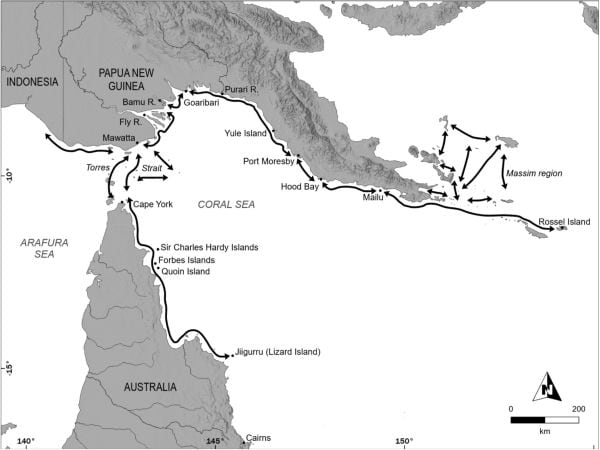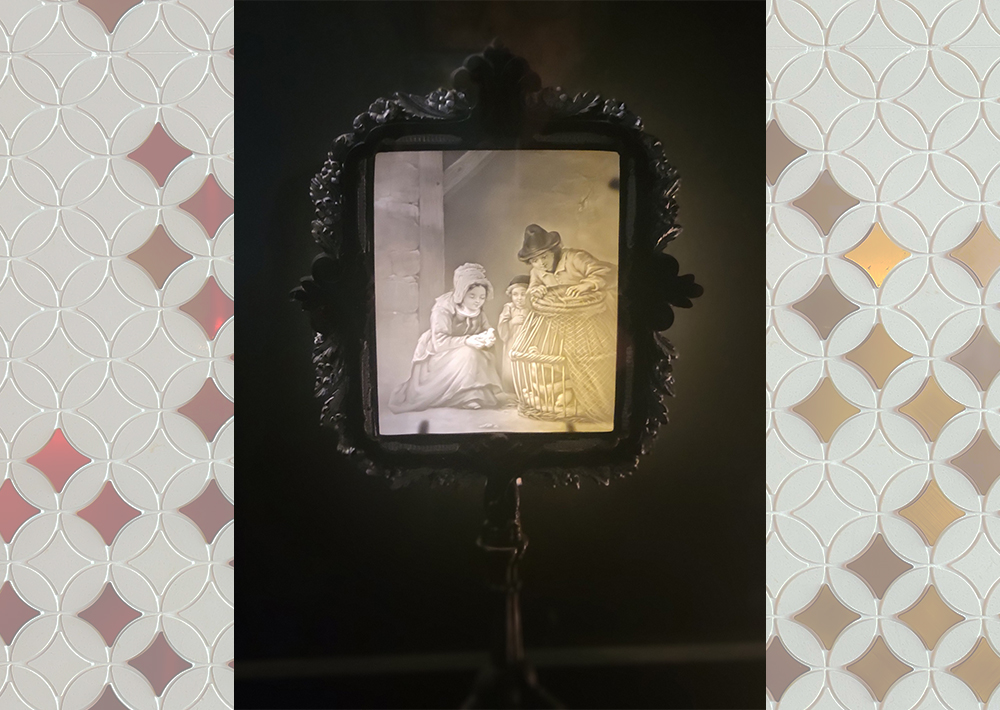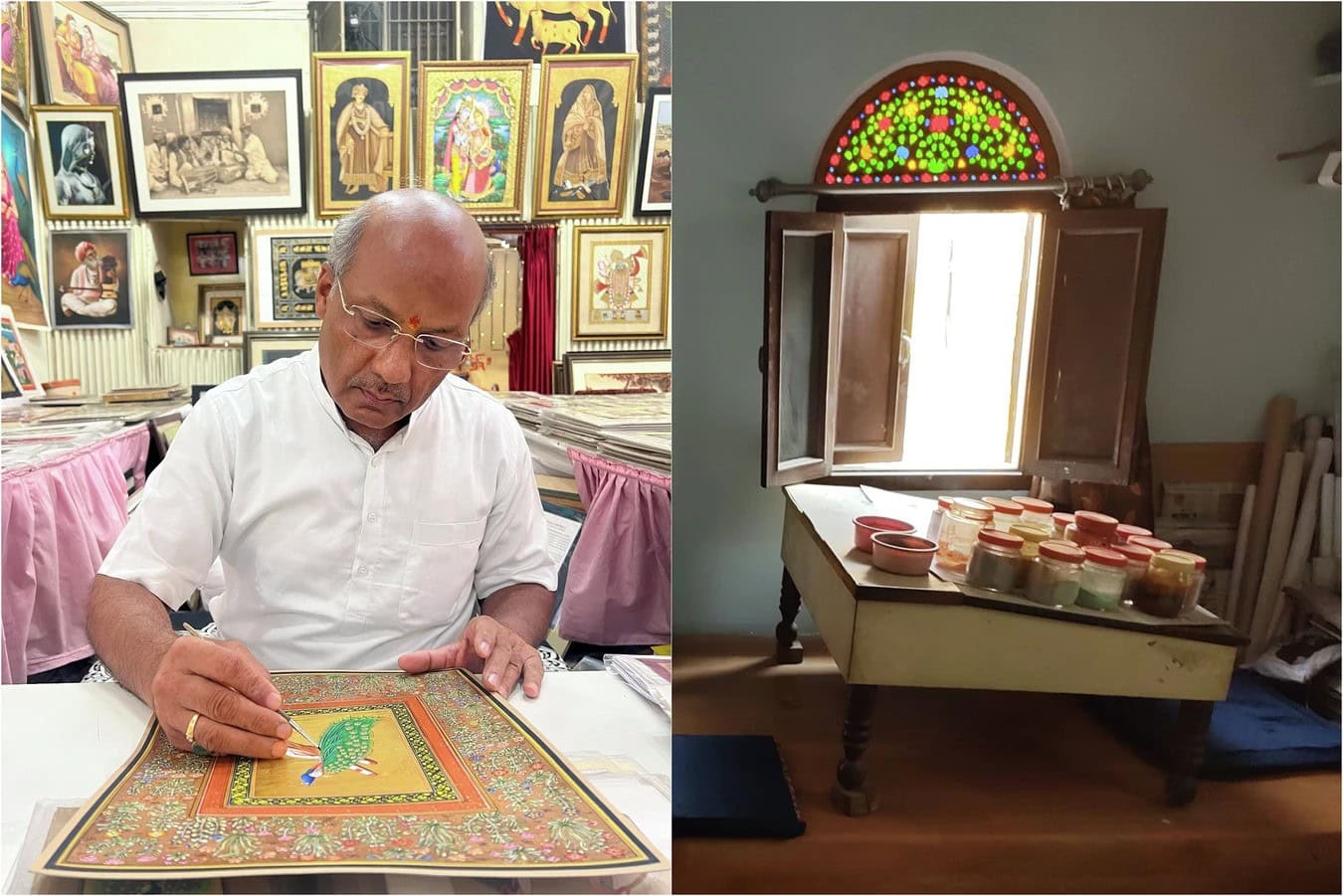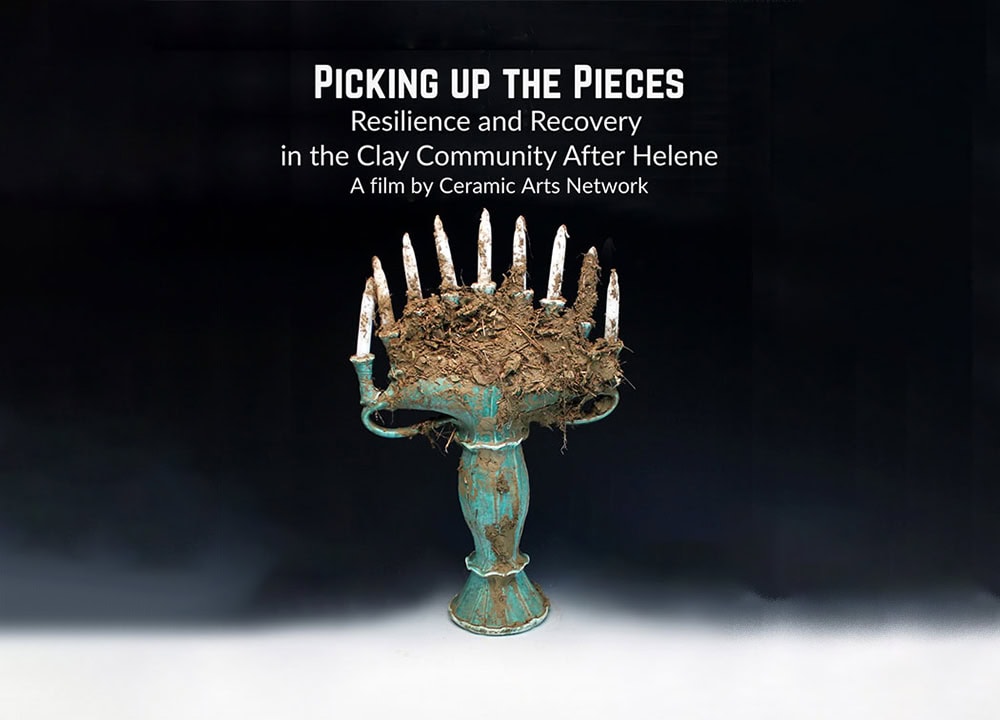
[Image above] South Island Headland Midden. Left: View across excavation to Blue Lagoon and reef flat. Right: Terrestrial laser scanning of final sections in progress. Credit: Ulm et al., Quaternary Science Reviews (CC BY 4.0)
Even without written documents, archeologists can glean a ton of information about ancient civilizations by studying old pottery samples. Not only does it provide insight into the society’s main manufacturing methods and materials, but it can also give clues about people’s daily lives.
Additionally, pottery analysis can indicate how people moved and who they interacted with based on the imitation or exchange of styles across the region or between regions. This information can help disprove stereotypes of certain cultures, such as regarding the Aboriginal people of Australia.
Until recently, researchers struggled to find evidence of local Aboriginal pottery manufacture and use in Australia. Some scholars used this apparent absence to support racist social evolutionary hierarchies characterizing Aboriginal societies as lacking cultural complexity.
However, other nearby regions had a firmly established culture of pottery production. Specifically, the Lapita culture refers to the culture of an ancient group of people considered to be the original human settlers of Melanesia, much of Polynesia, and parts of Micronesia between 1600 and 500 BCE. Their manufacture and use of fired pottery has been found extensively in Papua New Guinea and its islands, and even today many of these communities still make and use pottery.

Map of known Lapita cultural area showing the location of Jiigurru. Dashed extension of the Lapita cultural area into Torres Strait and northeast Australia indicates possible Lapita distribution or influence. Credit: Ulm et al., Quaternary Science Reviews (CC BY 4.0)
Researchers have puzzled over why evidence of their pottery is lacking along Australia’s eastern seaboard, which would have been within reach of the seafaring culture. Explanations range from incomplete archaeological sampling or failed settlement attempts.
In 2006, a breakthrough came when pottery sherds were found on the island of Jiigurru. This island, which is on the Great Barrier Reef in northeast Australia, emerged about 10,000 years ago. It is part of the Lizard Island Group, which is comprised of five islands surrounding a deep lagoon.
When humans first occupied Jiigurru about 6,500 years ago, it was only 30 kilometers from the mainland. This proximity made it possible for various cultures to develop sophisticated watercraft technology and open-sea navigational skills to reach the island. For example, Jiigurru played a key role in ceremonies, initiations, and other important activities based on stories passed down from the Elders of the Guugu Yimithirr nation, an Aboriginal people of far north Queensland.
While analysis of the 2006 pottery sherds suggested they were locally manufactured, dating the sherds was not successful due to them being rounded and worn down by coastal processes. However, further excavations uncovered more samples, and in a recent open-access paper spearheaded by researchers at the Australian Research Council, they confirmed the discovery of the oldest dated ceramics found in Australia.
The ceramic sherds in this study were recovered from the South Island Headland Midden, a terrestrial deposit on Jiigurru. The 82 highly fragmented sherds, which were distributed in a dense shell deposit comprising interlocking large reef shellfish species, had an average length of 17.7 mm and average thickness of 5.1 mm.
Radiocarbon dating of the sherds suggested that ceramic deposition occurred between 2950–2545 cal BP and 1970–1815 cal BP.* This timing overlaps with late Lapita and post-Lapita ceramic traditions of southern Papua New Guinea. In addition, the oldest occupation layers dated to 6510–5790 cal BP, making Jiigurru the earliest offshore island occupied on the northern Great Barrier Reef.
*cal BP stands for “calibrated years” or “calendar years” before the present and denotes that the raw radiocarbon date cited has been corrected using current methodologies.
Compositional analysis of the sherds using scanning electron microscopy and energy dispersive X-ray spectrometry indicated the vessels were locally manufactured because they belonged to three temper and clay groups locally sourced to northeast Australia, and most likely to Jiigurru. More specifically, quartz was the dominant temper type, followed by calcareous sand, feldspar, and mica aplastics.
Overall, temper showed significant rounding, indicating that temper sources were derived from coastal areas. This roundness also suggested beach sand was added to the clay rather than the inclusions being natural to the clay itself.
Based on the thickness of the sherds, they appeared to come from thin-walled vessels, which require less clay to manufacture and are lighter to transport. Because no sloped sherds were found, the vessels were most likely plain globular pots with either an everted rim or out curving rim. These pots are thicker at the rim, neck, and shoulder and gradually thinner toward the base.
The color of the clay was yellowish-brown with a slight reddish hue, with the interior being slightly more reddish than the exterior. Red-slip, a common characteristic of Lapita ware, was identified on two of the sherds.
Based on these findings, the researchers proposed that
- Pottery traditions in the three regions of Torres Strait, Jiigurru, and the south coast of Papua New Guinea have ancestral links back to the earliest Lapita ceramics in the Bismarck Archipelago of northeastern Papua New Guinea, 3,000–3,300 years ago.
- Northeast Australian Aboriginal communities not only had sophisticated canoe voyaging technology and open-sea navigational skills, but they were significantly involved in ancient maritime networks across the Coral Sea region, including Jiigurru. Thus, Aboriginal communities were not isolated or geographically constrained, as previously believed.

Connections across the Coral Sea cultural interaction sphere. Credit: Ulm et al., Quaternary Science Reviews (CC BY 4.0)
The authors conclude, “The pottery sherds at Jiigurru and the antiquity of offshore island occupation demonstrated in this study open a new chapter in Australian, Melanesian, and Pacific archaeology and point to a deep history of cultural interaction across the Coral Sea.”
Furthermore, “…the Jiigurru pottery evidence reveals the capacity of archaeology to shed profound new insights into Australia’s history and the international reach of First Nations communities over thousands of years prior to the commencement of British invasion in 1788,” they add.
The authors believe more pottery will be found on the northeast Queensland coastline.
The open-access article, published in Quaternary Science Reviews, is “Early Aboriginal pottery production and offshore island occupation on Jiigurru (Lizard Island group), Great Barrier Reef, Australia” (DOI: 10.1016/j.quascirev.2024.108624).
Author
Laurel Sheppard
CTT Categories
- Art & Archaeology
Related Posts
Lithophanes: Dedicated museum sheds light on these porcelain artworks
November 13, 2025


